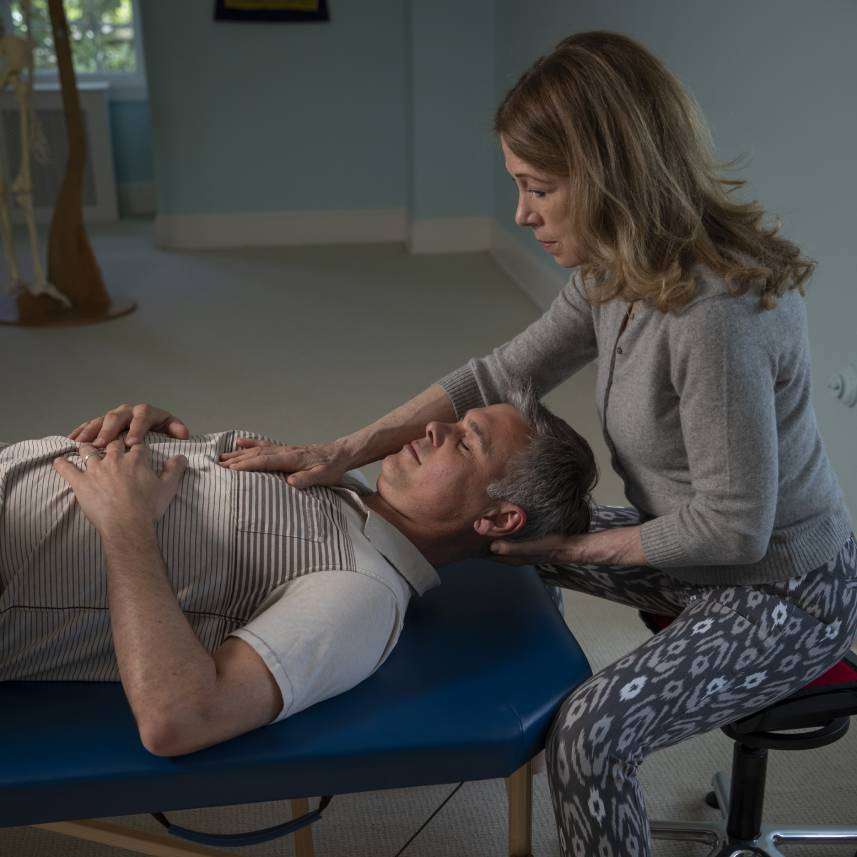Through the Feldenkrais Method® you will learn to use movement as your tool to improve your self-image and experience yourself more fully. How we learn and form habits is of central importance in the practice of the Feldenkrais Method® of Somatic Education. The Feldenkrais Method® utilizes functionally based variation, innovation, and differentiation in sensory-motor activity to break down habitual patterns and allow new ways of thinking, feeling and action to emerge.

“My purpose is to allow people to move closer to actually being creatures of free choice, to genuinely reflect individual creativity and emotion, freeing the body of habitual tensions and wired-patterns of behaviour so that it may respond without inhibition to do what the person wants.” ~ Moshe Feldenkrais
Feldenkrais is not intended to “cure” disease or disabilities. Instead, it is an effective way to learn about and improve physical and mental limitations through freedom and awareness of movement. Because the Feldenkrais Method® provides relief from many ailments caused by various neurological or physical disorders, it can greatly enhance our quality of living. As with all alternative therapies, the use of the Feldenkrais Method® does not preclude the use of many mainstream medical as well as other complementary alternative therapies.

In these group classes, gentle exploratory movement sequences are designed to give each person more understanding of themselves. You learn to move with less pain and effort, and in such a way that changes occur in the brain patterns which organize control of your body. You will learn how to translate intention into action with ease while getting rid of unnecessary interfering habits. The lessons begin with comfortable, easy movements that gradually evolve into movements of greater range and complexity, recapitulating the childhood experience of originally learning to organize and control movements. Functions that require repetition to learn are taught through numerous variations that maintain the novelty of the situation. Once the novelty wears off, awareness is dulled and no learning takes place.
The lessons are so arranged that they require concentration in order to sense kinesthetic (felt sense) differences. Without real attention, it is impossible to follow to the next stage in the lesson.
Participants engage in precisely structured movement explorations that involve thinking, sensing, moving, and imagining. The lessons are often based on developmental movements such as rolling, crawling, or moving from lying to sitting; or explorations of joint, muscle, and postural relationships. Minute, barely perceptible movements are used extensively to reduce latent tonus (degree of involuntary contractions) in the muscles. The gradual reduction of useless effort increases sensitivity.
One ATM lesson might involve measuring spaces inside your head in your mind’s eye. Or using your breath to find the midline of your body.
A famous series of ATM lessons enable you to learn to stand on your head – by guiding you to find that you can safely fall in all directions. Once you can fall from your head, standing on your head is no problem!
A few things distinguish all these different ATM lessons from many other forms of movement work. The teacher gives verbal instructions and doesn’t demonstrate. You don’t learn by copying someone else’s way of moving. You play with the movements the teacher suggests, to discover your own idea of the movement and your capacity for teaching yourself.
You can’t actually do anything wrong in an ATM: the instruction is always an instruction to explore your own idea of a movement. Sometimes, of course, you clarify your ideas in the course of a lesson, so that by the end of a lesson “left” means the same thing for you as it does for other people. Moshe Feldenkrais’ idea was that we don’t correct movement: we use movement as the means whereby you can correct your own self-image.
Lessons include many breaks – time spent just lying on the floor, sensing yourself, allowing the space for subconscious learning to happen. And the movement is gentle and easy, below the level of a stretch sensation, so the lessons are safe for people of many different ability levels.
The lessons range in mood from meditative to challenging. The goal of every lesson is to wake up your innate capacity for learning new movement possibilities. And since our sense of ourselves, of who we are, is a sense of what we are capable of doing, how we are capable of moving, to improve your capacity to learn new movement means to improve your self-image at a very deep level.
Who is Awareness Through Movement® for?
People come to these lessons in order to improve a particular problem they have – nagging back or knee or neck pain, for example. ATM gives you the chance to discover where your own movement habits and habits of awareness are contributing to chronic pain, and to learn new and more comfortable options for movement.
Sometimes people come to develop a greater feeling of being at home in their own bodies. The non-judgmental atmosphere of an ATM lesson is an opportunity for you to practice self-acceptance and self-awareness.
Some people come when they have grown tired of pushing themselves through life – always accomplishing things by trying too hard, by hurting themselves. ATM helps you learn how to accomplish more by doing less, by no longer wasting energy in fighting against yourself.
People in professions or with hobbies that are demanding on the body and their creativity find ATM very helpful – massage therapists, musicians, dancers, actors, athletes, martial artists.
People cultivating meditation practices find the ATM process a natural somatic extension of their interest in mindfulness.
“Feldenkrais,” “Feldenkrais Method,” and “Awareness Through Movement” are service marks of the “Feldenkrais Guild® of North America.”